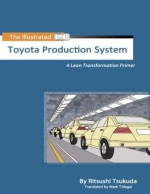Tab Article
The Toyota Production System has been studied by people eager to find its secret to success for many years. Too often we shout "Eureka!" and run off to implement the set of techniques or tools that seem to fit out situation the best. When this approach is only partially successful, we make excused that "we are different" than Toyota.In fact, all of our businesses and processes are more similar to Toyota than we would like to admit. What Toyota does differently and better than most of us is to learn from others and from themselves, studying both failures and successes. Exploring the keys to the Toyota Production System and its success requires that we keep an open mind and seek to learn from many sources.The illustrated Toyota Production System: A lean Transformation Primer uses a series of short one-point lessons combined with illustrations and is an excellent resource to begin your exploration or refresh your knowledge.


